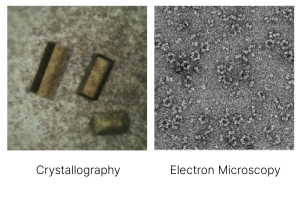Metalloproteins and Metalloenzymes
The primary targets of research in the Drennan lab are enzymes that contain metals or metallocofactors. These metalloenzymes use the enhanced reactivity of transition metals to catalyze challenging chemical reactions including radical-based chemistry and manipulation of organometallic bonds. The lab is also interested in metalloproteins that sense changes in the cellular environment and act as gene regulators.

A structural approach to studying enzymes
The Drennan lab combines X-ray crystallography and electron microscopy with other techniques from biochemistry and biophysics to understand enzyme mechanisms. They like to call this approach “structural metalloenzymology”.
At the atomic scale, we are interested in providing detailed three-dimensional information about the nature of complex metallocofactors to help understand how protein environment modulates reactivity. At the protein scale, we are interested in seeing how enzymes are constructed to control substrate access and specificity, and how they prevent loss of reactive intermediates or damage to expensive cofactors. At the largest scale, that of protein complexes, we want to know how proteins interact and how those interactions explain the observed behavior. Protein complexes are often large, have multiple distinct states, and can have large inter- and intrasubunit motions; therefore a single “snapshot” usually does not tell the entire story.

Professor Drennan’s iBioSeminar on Metalloproteins: Introduction, Medicine, and the Environment.